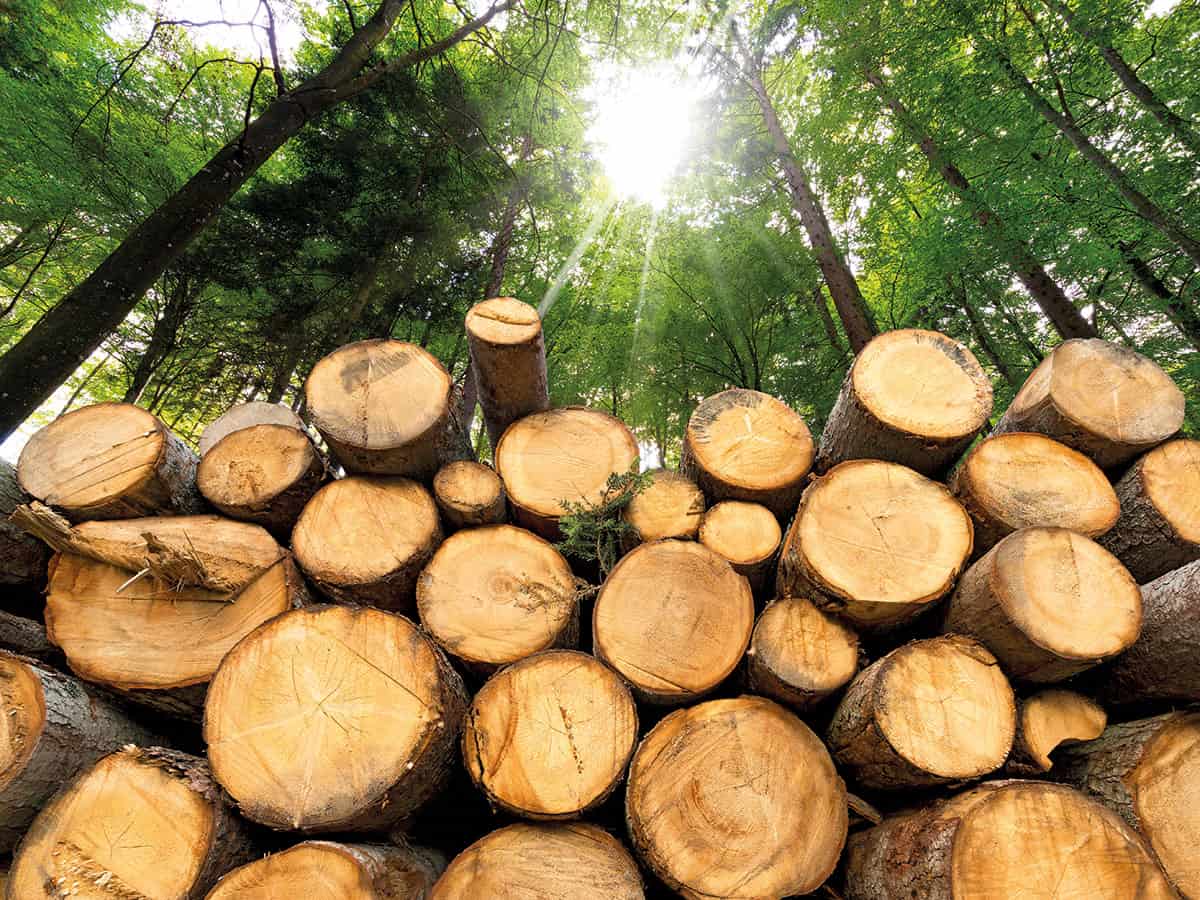
Biomass is a term that refers to renewable organic materials derived from plants, animals, and microorganisms. It serves as a valuable source of energy, as it can be converted into heat, electricity, or biofuels. As the world seeks sustainable alternatives to fossil fuels, biomass offers a promising solution due to its abundance and renewable nature. In this article, we will explore 10 fascinating facts about biomass that highlight its potential and importance in the field of energy production. From its role in reducing greenhouse gas emissions to its versatility in various applications, biomass is an intriguing subject that showcases the advancements and possibilities in the realm of renewable energy.
Key Takeaways:
- Biomass is a renewable energy source made from plants and organic waste. It can be used for heat, electricity, and even biofuels, helping to reduce greenhouse gas emissions and create new jobs.
- By using biomass, we can turn organic waste into energy, reduce carbon emissions, and create jobs. It’s a versatile and eco-friendly way to power our world sustainably.
What is Biomass?
Biomass refers to any organic material derived from plants or animals, including agricultural residues, forestry waste, energy crops, and even food waste. It is a carbon-neutral energy source, as the carbon released during its combustion is offset by the carbon absorbed during the growth of the biomass feedstock.
Versatile Energy Source
Biomass can be used for various purposes, including heat and power generation. It can be burned directly or transformed into biofuels like ethanol and biodiesel. Additionally, biomass can be converted into biogas through anaerobic digestion, providing renewable energy for heating and electricity production.
Reduction of Greenhouse Gas Emissions
By utilizing biomass as an alternative to fossil fuels, we can significantly reduce greenhouse gas emissions. Biomass energy production results in lower carbon dioxide emissions compared to traditional energy sources like coal and natural gas.
Waste-to-Energy Solution
Biomass offers a sustainable solution for managing organic waste. By converting agricultural residues, food waste, and other organic materials into energy, we can reduce landfill waste and minimize the release of harmful gases produced during decomposition.
Job Creation
The biomass industry presents job opportunities at various stages, including biomass production, collection, transportation, and conversion. This contributes to economic growth and provides employment opportunities for local communities.
Renewable Heat Generation
Biomass is commonly used for heat generation in residential, commercial, and industrial settings. Biomass boilers can efficiently burn organic materials, providing cost-effective heating solutions while reducing reliance on fossil fuels.
Positive Impact on Agriculture
Energy crops such as switchgrass and miscanthus, which are commonly used for biomass production, can help improve soil quality and prevent erosion. Growing these crops as biomass feedstock can be environmentally beneficial for agricultural land.
Biomass Co-firing
Biomass can be co-fired with traditional fossil fuels in power plants, reducing the overall carbon emissions associated with electricity generation. This practice allows for a gradual transition towards renewable energy without significant infrastructure changes.
Carbon Storage
While biomass releases carbon dioxide when burned, the carbon emitted is part of the natural carbon cycle. Furthermore, biomass plants can be sustainably managed, ensuring reforestation and regrowth, which aid in sequestering carbon from the atmosphere.
Global Availability
Biomass is a widely available and accessible energy source globally. It can be locally produced, reducing dependence on distant energy supply chains. This makes biomass an essential component in achieving sustainable energy independence.
These 10 fascinating facts about biomass highlight its versatility, eco-friendliness, and potential as a renewable energy source. As the world focuses on transitioning to sustainable energy systems, biomass plays a vital role in reducing greenhouse gas emissions and promoting a greener future.
Conclusion
In conclusion, biomass is a remarkable source of renewable energy that holds immense potential for addressing our energy needs while reducing our carbon footprint. It is a sustainable and reliable energy alternative that utilizes organic matter in various forms to produce heat, electricity, and fuel. Biomass has numerous advantages, including its abundance, versatility, and ability to reduce greenhouse gas emissions.By harnessing the power of biomass, we can contribute to the transition toward a greener and more sustainable future. From its role in reducing dependence on fossil fuels to its ability to create new economic opportunities, the potential of biomass is truly awe-inspiring.As we continue to explore and innovate in the realm of biomass technology, we can further unlock its potential in various sectors, such as agriculture, forestry, and waste management. Embracing biomass as a viable energy source can bring us one step closer to achieving a cleaner and more sustainable planet.
FAQs
1. What exactly is biomass?
Biomass refers to any organic matter derived from plants or animals that can be used as fuel to generate heat, electricity, or fuel.
2. How is biomass converted into energy?
Biomass can be converted into energy through various processes such as combustion, gasification, or anaerobic digestion, which release the stored energy in the organic matter.
3. What are the advantages of using biomass as an energy source?
Some key advantages of biomass are its renewable nature, reduction in greenhouse gas emissions, ability to utilize existing waste streams, and potential for rural economic development.
4. Is biomass energy considered sustainable?
Yes, biomass energy is considered sustainable as long as it is harvested and utilized responsibly, ensuring the preservation of ecosystems and biodiversity.
5. Can biomass energy replace fossil fuels entirely?
While biomass energy has the potential to contribute significantly to our energy needs, it is unlikely to completely replace fossil fuels. A diversified energy mix that includes various renewable sources is crucial for a sustainable future.
6. Are there any challenges associated with the use of biomass?
Some challenges associated with biomass energy include sourcing sustainable and reliable feedstock, managing emissions during combustion, and ensuring proper waste disposal and environmental protection.
7. What are some common types of biomass feedstock?
Common types of biomass feedstock include agricultural residues (crop waste, straw), forestry residues (branches, sawdust), energy crops (switchgrass, miscanthus), and organic waste (food waste, manure).
8. Is biomass energy widely used around the world?
Yes, biomass energy is utilized in various countries around the world, with some regions heavily relying on it for their energy needs. However, its widespread adoption is still in progress.
9. How does biomass energy contribute to reducing greenhouse gas emissions?
Biomass is considered a carbon-neutral energy source as the carbon dioxide released during its combustion is offset by the carbon dioxide absorbed during the growth of the biomass feedstock.
10. What role does biomass play in the circular economy?
Biomass plays a crucial role in the circular economy by utilizing organic waste and residues as feedstock, reducing landfill waste, and creating a closed-loop system where resources are recycled and reused.
Biomass offers a wealth of benefits, from its renewable nature to job creation. But there's more to explore! Delve into the intriguing process of biomass conversion, where organic matter transforms into usable energy. Unravel the secrets of biomass energy and its potential to power our world sustainably. Lastly, prepare to be amazed by the wonders of ecological pyramids, which showcase the intricate relationships within ecosystems. Each topic holds a treasure trove of knowledge waiting to be discovered.
Was this page helpful?
Our commitment to delivering trustworthy and engaging content is at the heart of what we do. Each fact on our site is contributed by real users like you, bringing a wealth of diverse insights and information. To ensure the highest standards of accuracy and reliability, our dedicated editors meticulously review each submission. This process guarantees that the facts we share are not only fascinating but also credible. Trust in our commitment to quality and authenticity as you explore and learn with us.


